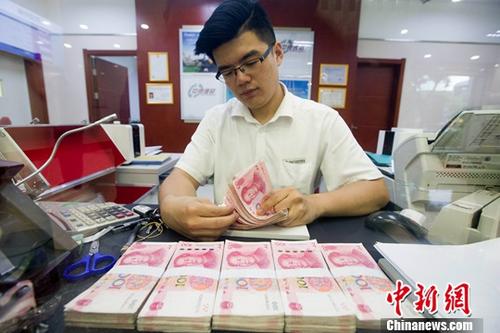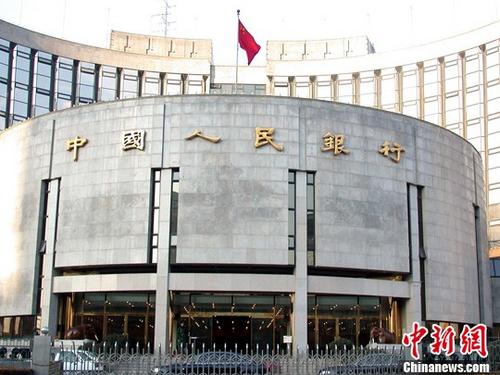The implementation of this new regulation is related to the wallet security of hundreds of millions of users such as WeChat and Alipay.
BEIJING, July 9 (Li Zhanghong) On the 9th, this new regulation of the central bank was officially implemented, involving the wallets of hundreds of millions of users of many payment institutions such as WeChat Pay and Alipay, making it safer for you to spend money in buy buy.
That is to say, the payment institution will gradually increase the centralized deposit ratio of customers’ reserve funds every month from July 9, and realize 100% centralized deposit to the central bank by January 14, 2019.
What is customer reserve?
The money you have in the account of the payment institution, such as Alipay balance, WeChat change, prepaid card balance, etc., all belong to the customer reserve. They are not deposits, but prepaid value in essence.
It should be pointed out that the funds in the accounts of wealth management products such as Yu ‘ebao are monetary funds, not customer reserves, and are subject to different supervision.
According to the definition of the central bank, customer reserve is the monetary fund to be paid by the payment institution in advance from its customers.
Specifically, when we buy goods or services on the e-commerce platform, we first transfer the money to the virtual account of the payment institution. After you get the confirmation of the goods, the payment institution will transfer the payment to the merchant, and when the payment is retained in the account of the payment institution, the deposited funds formed belong to the reserve fund.

On November 14, 2017, after the "Double Eleven" online shopping, the express delivery peak in the campus of a university in Nanjing. Photo by Luo Bo
What is the scale of customer reserve?
According to Analysys data, in the third quarter of 2017, the overall transaction scale of comprehensive payment services of non-financial payment institutions in China has reached 42 trillion yuan. This means that the customer’s reserve fund is not decimal.
According to the relevant person in charge of the central bank, it took only three years for the stock balance of customer reserve funds of payment institutions to rise from 126.6 billion in 2013 to more than 460 billion at the end of the third quarter of 2016. According to the calculation of market institutions, the scale of customer reserve of payment institutions is likely to have exceeded one trillion.
By the end of May 2018, the deposits of non-financial institutions in the balance sheet of the central bank’s monetary authorities were 500.923 billion yuan, a fourfold increase compared with January. If calculated according to the 50% deposit ratio implemented before July 9, the scale of customer reserve of payment institutions has exceeded one trillion.
"Non-financial institution deposit" refers to the customer reserve deposit deposited by the payment institution with the People’s Bank of China.
Without effective supervision, is this money safe?
The ownership of the customer’s reserve fund belongs to the customer of the payment institution, but unlike the customer’s bank deposit, it is not protected by the Deposit Insurance Regulations, nor is it deposited in the bank in the name of the customer. Previously, it was deposited in the bank in the name of the payment institution, and the payment institution initiated the fund transfer instruction to the bank.
In other words, the reserve fund originally belongs to the customer, but it is actually dominated and controlled by the payment institution.
Before the centralized depository system was implemented, the deposit method of customers’ reserves of payment institutions was mainly to open accounts in several banks in their own names for decentralized deposit. According to the data of the central bank, on average, each payment institution opens 13 customer reserve accounts, and the largest number of customer reserve accounts is 70.
Therefore, the debate and discussion on the safety of user’s reserve funds and whether there is any misappropriation has been going on.

What are the specific risks of our money?
First, there is a risk that the customer’s reserve fund will be misappropriated by the payment institution.
The reporter found out that the phenomenon of payment institutions misappropriating customers’ reserve funds has occurred from time to time across the country. Shanghai Changbu Company, whose payment business license was cancelled by the central bank in 2016, maliciously misappropriated the reserve fund, resulting in a capital risk exposure of 780 million yuan, involving 51,400 cardholders, and the rights and interests of customers were seriously infringed. Since 2018, payment institutions in Hangzhou, Qingdao and other places have been punished for misappropriating customer reserve funds.
Second, some payment institutions illegally occupy customers’ reserve funds for purchasing wealth management products or other high-risk investments.
Zhao Xijun, deputy dean of the School of Finance and Finance of China Renmin University, said in an interview with Zhongxin.com that if the payment institution invests in projects with high risks, there may be risks and losses. Once there is liquidity problem during payment, it will affect the normal operation of the whole payment business.
Third, payment institutions may provide channels for criminal activities such as money laundering.
Payment institutions handle inter-bank capital settlement through reserve accounts opened in various commercial banks, operate beyond the scope, and exercise the inter-bank clearing function of the central bank or clearing organizations in disguise. What’s more, some payment institutions take this opportunity to provide channels for criminal activities such as money laundering, which also increases the hidden dangers of cross-system transmission of financial risks.
Fourth, the decentralized storage of customer reserves is not conducive to the overall fund management of payment institutions, and there is liquidity risk.

So, the central bank shot!
That is to implement "centralized depository".
Centralized deposit of customer reserve funds means that the payment institution deposits the customer reserve funds into the special deposit account of the designated institution according to a certain proportion.
At the beginning of 2017, the central bank issued a document requiring the payment institution to deposit the customer’s reserve funds into the designated institution’s special deposit account according to a certain proportion, with the highest proportion of 20%. At the beginning of 2018, the central bank gradually increased the deposit ratio of reserve funds to 50%, and from February to April 2018, the centralized deposit ratio was increased by 10% every month.
On June 29, the central bank issued a new notice, clarifying that from July 9, 2018, the proportion of centralized deposit of customer reserve funds of payment institutions will be gradually increased on a monthly basis, and 100% centralized deposit will be realized by January 14, 2019.
The central bank also requested thatThe depository bank of reserve funds has been changed from a qualified commercial bank to a branch of the People’s Bank of China where the legal person is located (that is, the customer reserve funds of payment institutions will be directly supervised by the central bank, and the customer reserve funds accounts will no longer be scattered in various commercial banks).. At the same time, the deposit time of the reserve fund is also the second Monday of each month instead of the original quarterly deposit, and the deposit base is the daily average balance of the customer’s reserve fund in the previous month.
Zhao Xijun believes that centralized depository eliminates the phenomenon that payment institutions can misappropriate customers’ reserve funds, makes the management of reserve funds more standardized and safe, reduces the risk of reserve fund management, and also reduces the risk of liquidity of payment institutions.

Will it affect the shopping experience of users?
Some users are worried that the centralized deposit of customers’ reserve funds by payment institutions will affect the shopping experience during the payment process. The relevant person in charge of Tencent Tenpay said that it will not have a direct impact on users.
In fact, after the centralized deposit of customers’ reserve funds, the phenomenon of illegal misappropriation of reserve funds by payment institutions will be curbed, and it will be safer to spend money on third-party payment platforms such as Alipay and WeChat. Moreover, the balance of consumers in various prepaid cards will also be more effectively guaranteed.
The relevant person in charge of Alipay and Tencent Tenpay told the reporter of Zhongxin.com that the central bank’s move is conducive to the healthy, stable and sustainable development of the industry.
The latest report released by Ipsos shows that the number of mobile payment users in China is about 890 million. Among them, there are 820 million Tenpay users and 650 million Alipay users related to WeChat payment, and their user penetration rates are 85.4% and 68.7% respectively.
In the past, payment institutions deposited customers’ reserves in commercial banks in the form of deposits and charged interest, which was called "lying down to make money". According to the relevant regulations, the customer’s reserve funds deposited by the payment institution will not be subject to interest. On the surface, the payment institution will lose part of its profit source, resulting in losses.
In fact, many payment institutions earn interest income by expanding the scale of customers’ reserves, which deviates from the main business of providing payment services, causing disorder and confusion in the payment service market to a certain extent and destroying the market environment of fair competition.
The Notice of the General Office of the State Council on Printing and Distributing the Implementation Plan for Special Remediation of Internet Financial Risks clearly puts forward that payment institutions should be prevented from taking "eating spreads" as the main profit model, the incentive mechanism for business development of payment institutions should be rationalized, and non-bank payment institutions should be guided to return to the purpose of providing small, fast and convenient micro-payment services.
The relevant person in charge of the central bank said that the centralized deposit and management of customer reserves of payment institutions is conducive to restoring the business origin of payment institutions, protecting the legitimate rights and interests of consumers, maintaining financial stability and market order, and better promoting the sustained and healthy development of the payment service market.